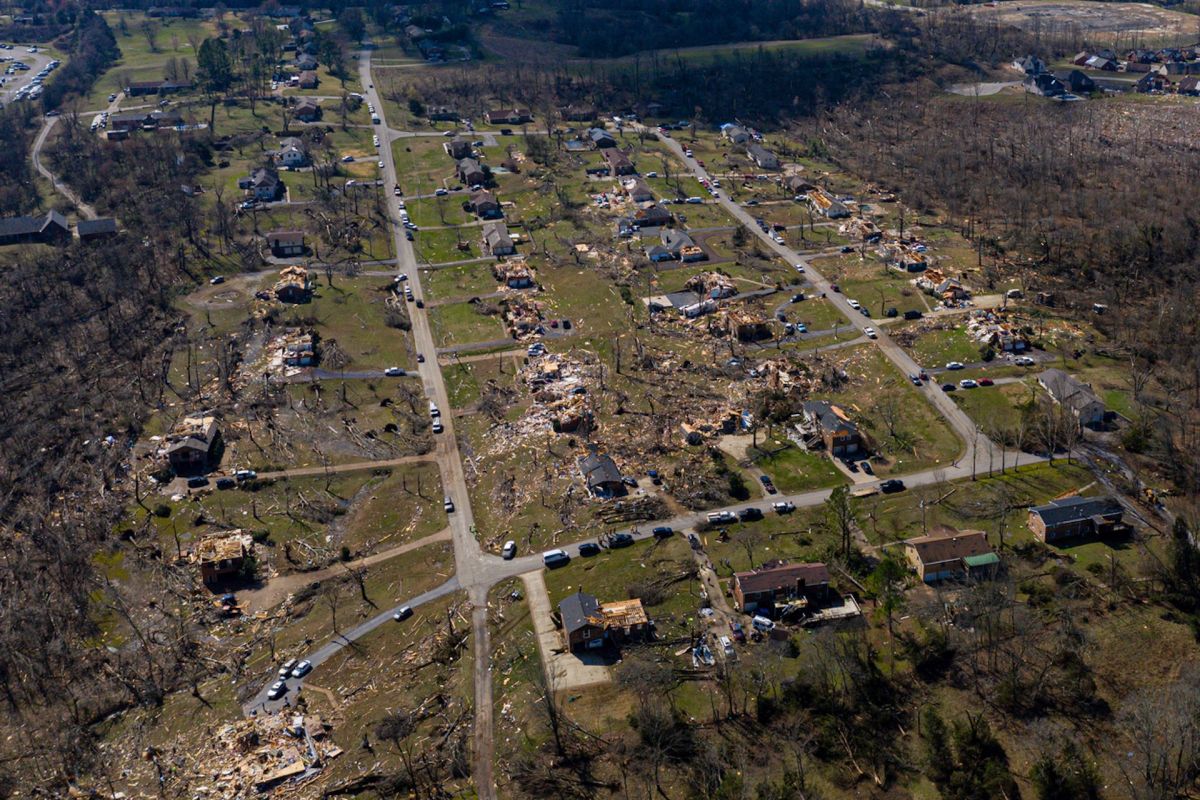The United States experiences more tornadoes than any other country, and rebuilding after these natural disasters can cost billions. Unfortunately, given an increase in tornadoes in some regions, Americans won't have relief anytime soon.
What happened?
In the past six years, the U.S. has had 17 different billion-dollar tornado events, according to CNBC's Katie Koontz. Koontz noted that 2022 alone had two such disasters and that costs associated with tornadoes are projected to grow.
"Rebuilding is a very long process, and it's one that is arduous," FEMA Associate Administrator for Resilience Victoria Salinas told CNBC, adding it can take years for communities to recover.
The U.S. has roughly 1,200 tornadoes annually, per the National Oceanic and Atmospheric Administration (NOAA). While most occur in Tornado Alley — which typically refers to areas in the middle of the country, such as Oklahoma, Kansas, and northern Texas — tornadoes have been spotted in all 50 states.
Why is this concerning?
Walker Ashley, an atmospheric scientist and disaster geographer at Northern Illinois University (NIU), told Julia Jacobo of ABC News that warmer global temperatures increase the likelihood of the "fundamental ingredients" that can lead to tornadoes.
While scientists are still investigating the exact link between tornadoes and the changing temperatures of our planet due to harmful pollution, storms have been occurring in unusual areas more often, meaning the impact of the destruction could be wider.
In 2018, a joint study by NIU and the NOAA's National Severe Storms Laboratory discovered parts of the Southeast and Midwest saw "significant increasing trends of tornado reports and tornado environments."
"We have way more people living east of the Mississippi River. And so basically, we have more targets, more exposure, more vulnerability as humans, our built environment," said Victor Gensini, an associate professor in the Department of Earth, Atmosphere, and Environment at NIU, per CNBC.
What is being done about the tornadoes?
While twister-resilient structures are more expensive to construct, they can reduce the need to rebuild after storms in addition to protecting human life.
According to the Insurance Institute for Business & Home Safety, a fortified roof, impact protection for windows and doors, and a wind-rated garage door — meaning it can withstand debris — are some ways to limit damage and help keep you safe.
Meanwhile, some communities are passing building codes to combat the high winds. After a tornado killed 161 people and caused nearly $3 billion in damage in Joplin, Missouri, in 2011, the city began to require more storm-proofing on structures, CNBC reported.
The federal government has also taken measures to assist. In 2021, it passed the Bipartisan Infrastructure Deal, which in part focuses on creating disaster resilience while reducing pollution linked to extreme weather events.
Join our free newsletter for cool news and cool tips that make it easy to help yourself while helping the planet.









